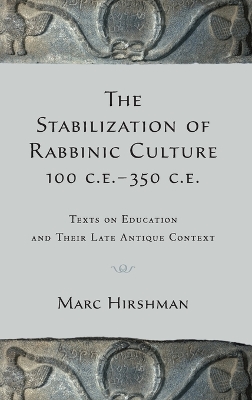In the first five centuries of the common era, in Roman Palestine and Sasanid Persia, a small group of perhaps a couple of thousand Jewish scholars and rabbis were able to secure and sustain a thriving national and educational culture. They procured loyalty to the national language and oversaw the retention of a significant national identity. This accomplishment was unique in the Roman Near East. Few physical artifacts remain to attest to this achievement. But the
paucity of physical remains of late antique Jewish learning is in inverse proportion to the scope of the oral teaching, which was committed to writing only in the middle ages. The content of this oral teaching remains the staple of Jewish learning through modern times. Marc Hirshman traces and outlines
the ideals and practices of rabbinic learning as presented in the relatively few late antique sources that discuss the processes and ideals of learning in depth . Though oral learning was common in many ancient cultures, the Jewish approach has a different theoretical basis and different aims. Hirshman explores the evolution and institutionalization of Jewish culture in both Babylonian and Palestinian sources. At its core, he argues, the Jewish cultural thrust in the first centuries of the
common era was a sustained effort to preserve the language of its culture in its most pristine form. This was done by the rabbis in a very conscious cultural conflict with their surrounding cultures.
- ISBN10 0195387740
- ISBN13 9780195387742
- Publish Date 12 November 2009
- Publish Status Active
- Publish Country US
- Imprint Oxford University Press Inc
- Format Hardcover
- Pages 208
- Language English
